According to the brandbook of the famous toy company, Lego mission statement is “Inspire builders of tomorrow.” In simple words, it wants to inspire and evolve future builders, striving to help kids imagine creatively, work systematically, and experience the endless possibilities of creating a new world. That is why the company’s showrooms and flagship stores are designed to empower to imagine new worlds and to provide them with the tools and the skills to make them reality.
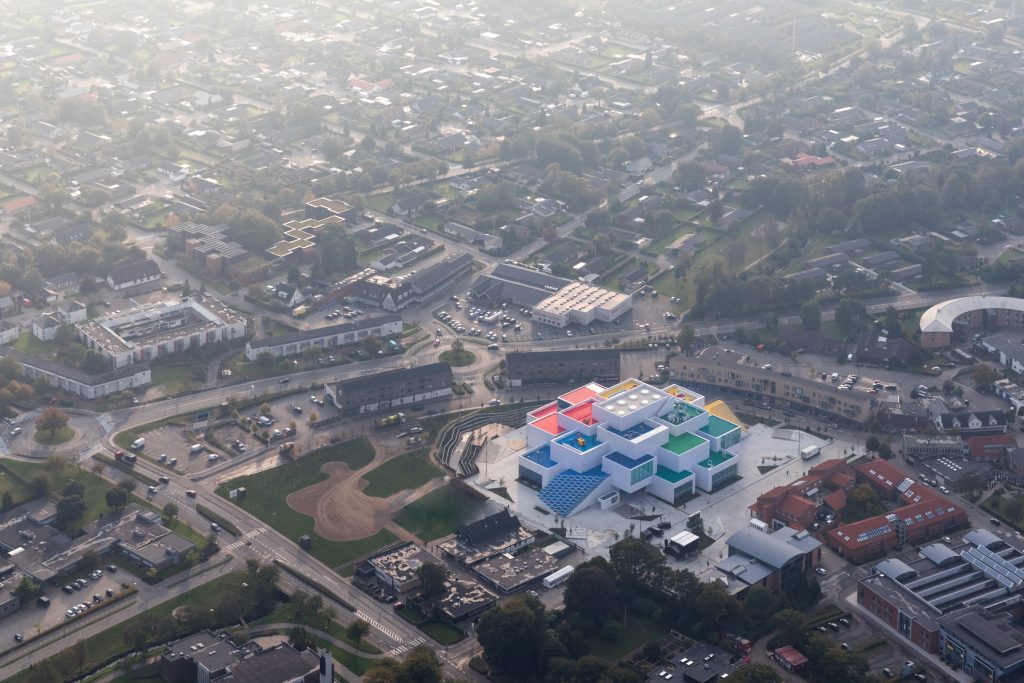
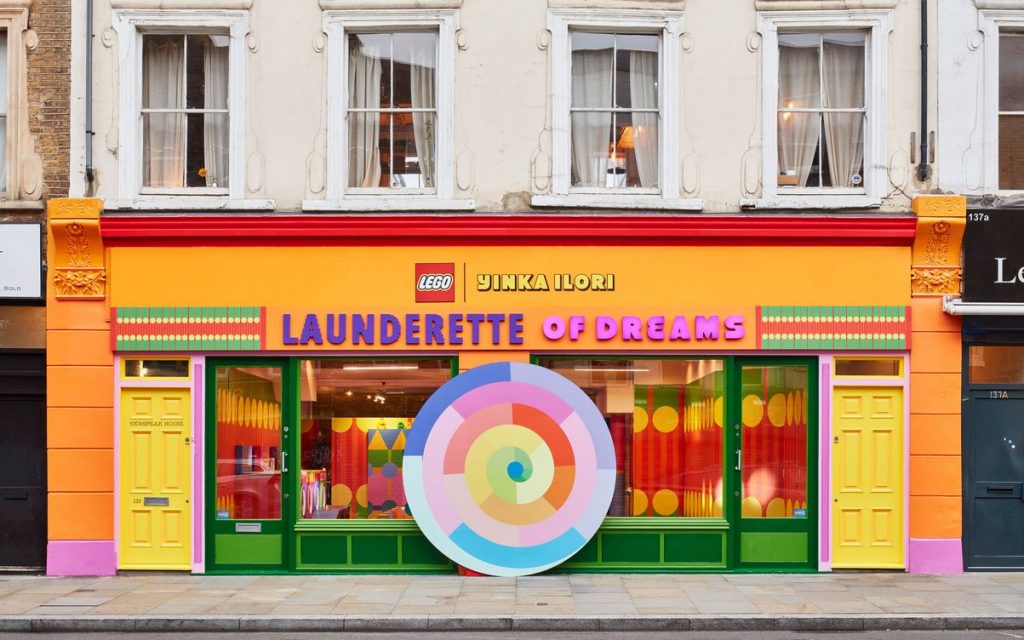
Launderette of Dreams by Yinka Ilori
Last year, London-based designer Yinka Ilori worked with Lego Group to create the Launderette of Dreams, an installation in London, as part of the Lego Group’s Rebuild the World advertising campaign, which celebrates children as “the masters of creative problem solving”.
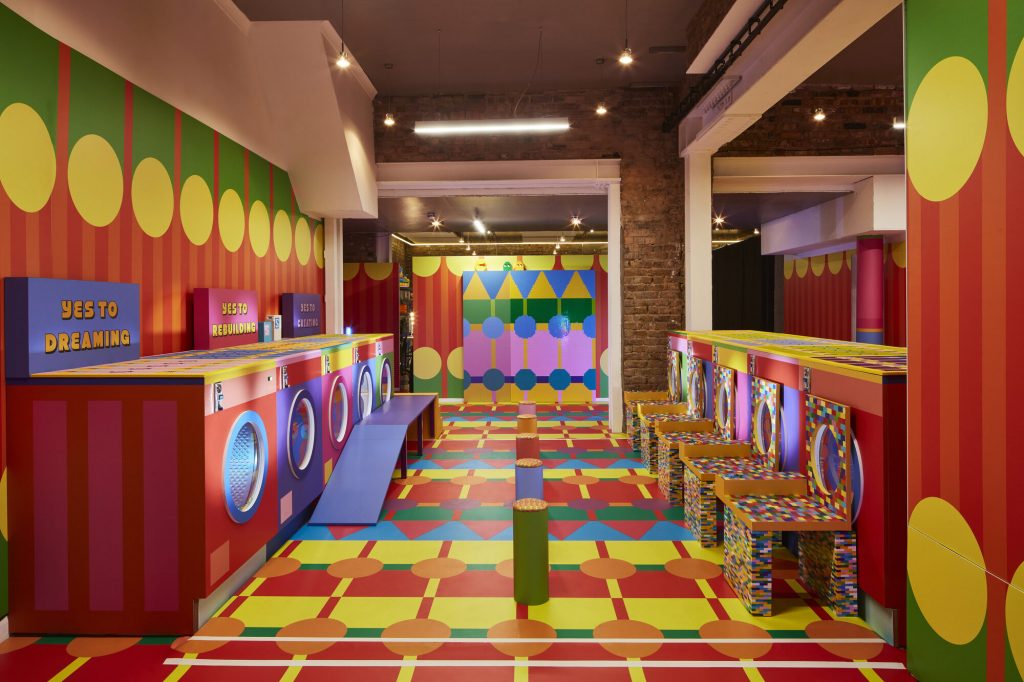
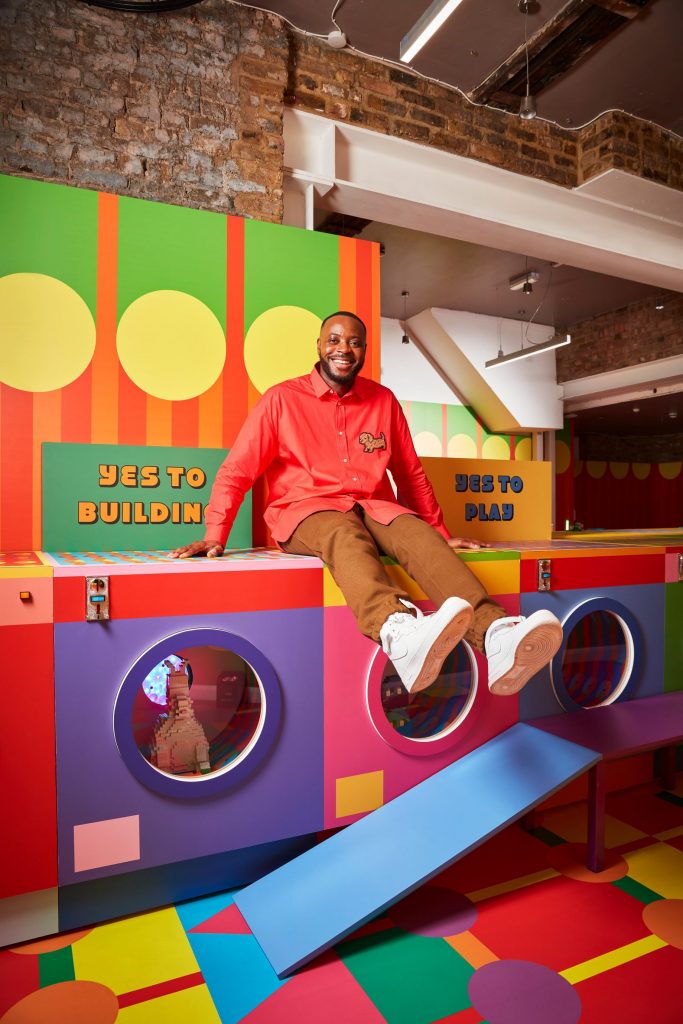
Launderette of Dreams by Yinka Ilori
Designed to reimagine the everyday community space as a children’s play zone, the installation features ten “washing machines,” which contain Lego creations in the drums, lining both sides of the room. Some of these are interactive and include kaleidoscopic light installations.
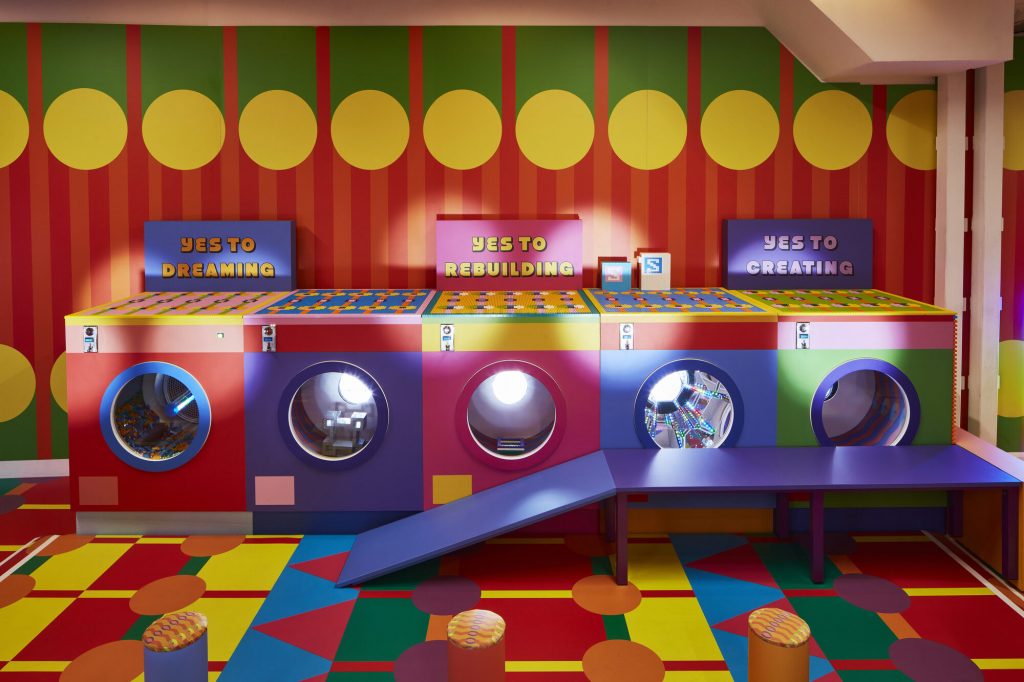
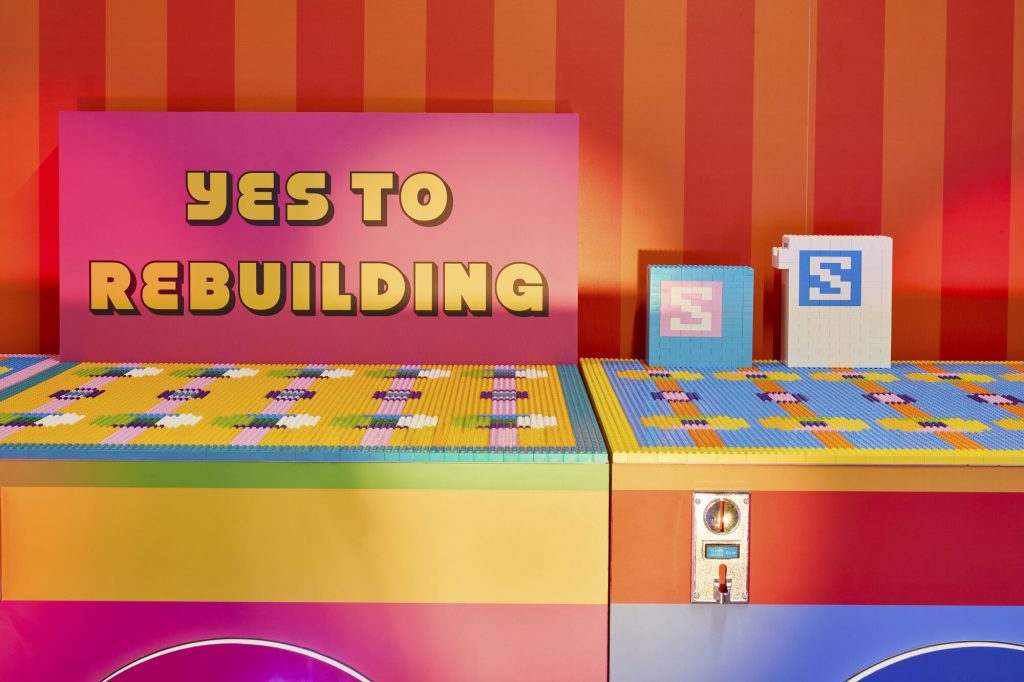
Launderette of Dreams by Yinka Ilori
Other highlights include hopscotch floors, a giant Lego mural, which allows visitors to build, disassemble and rebuild the design using Lego bricks, and a vending machine that dispenses toys instead of soap. More than 200,000 Lego bricks were used for the interior and the shopfront, both as a structural material and as objects for play.
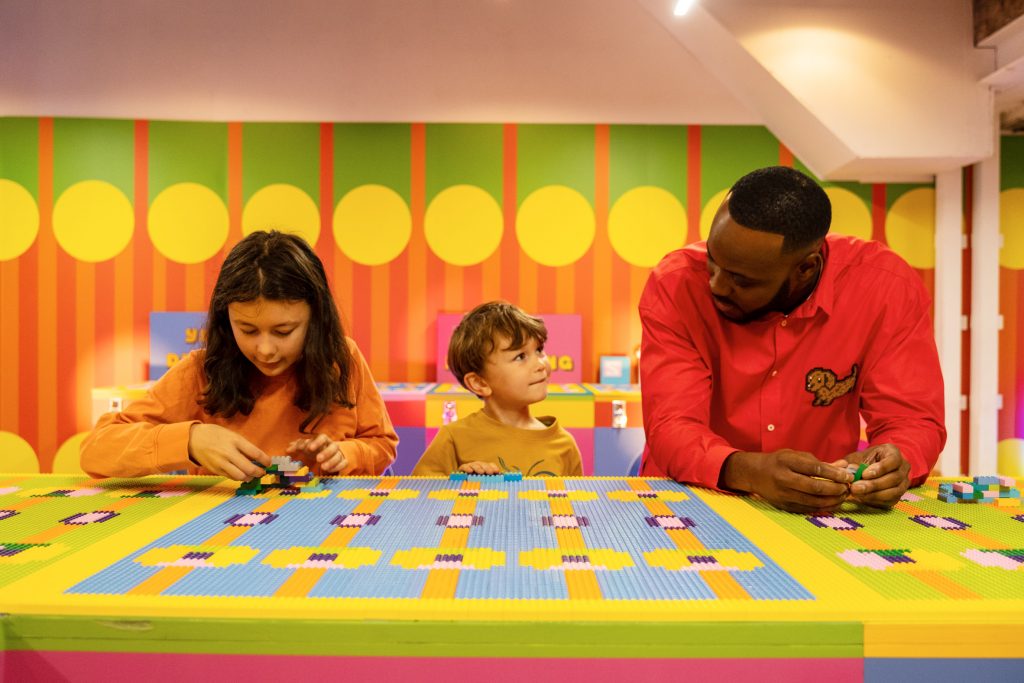
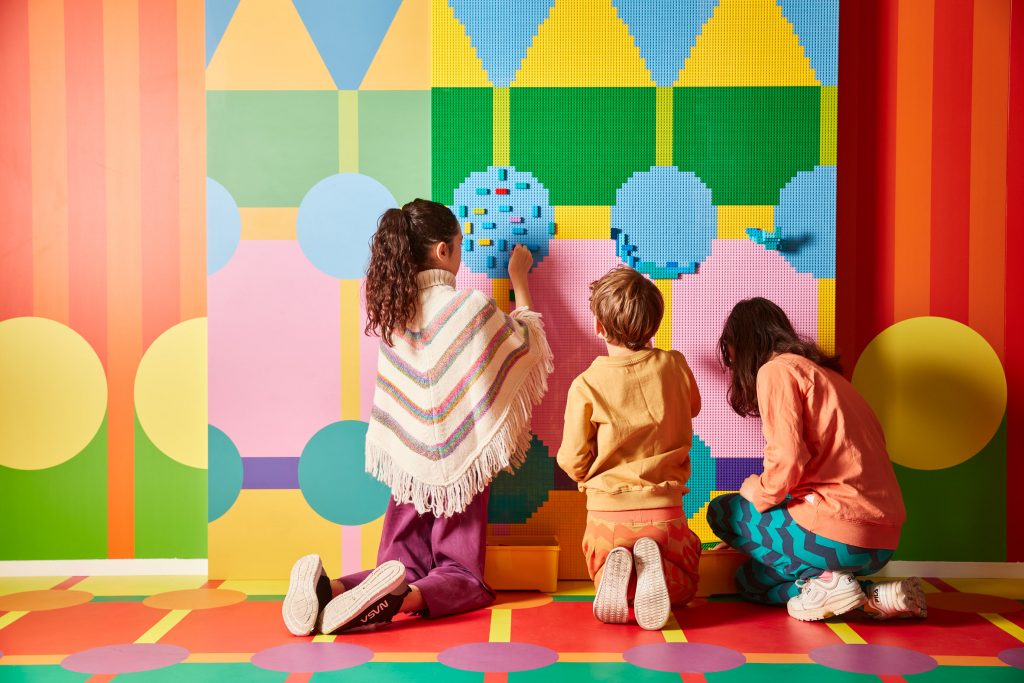
Launderette of Dreams by Yinka Ilori
As the concept was rooted in the strong childhood memories Ilori had of playing at his local launderette on Essex Road, north London, while the adults were preoccupied with laundry, the designer wanted to honour the role that laundromats can play as a community and social space with his project.
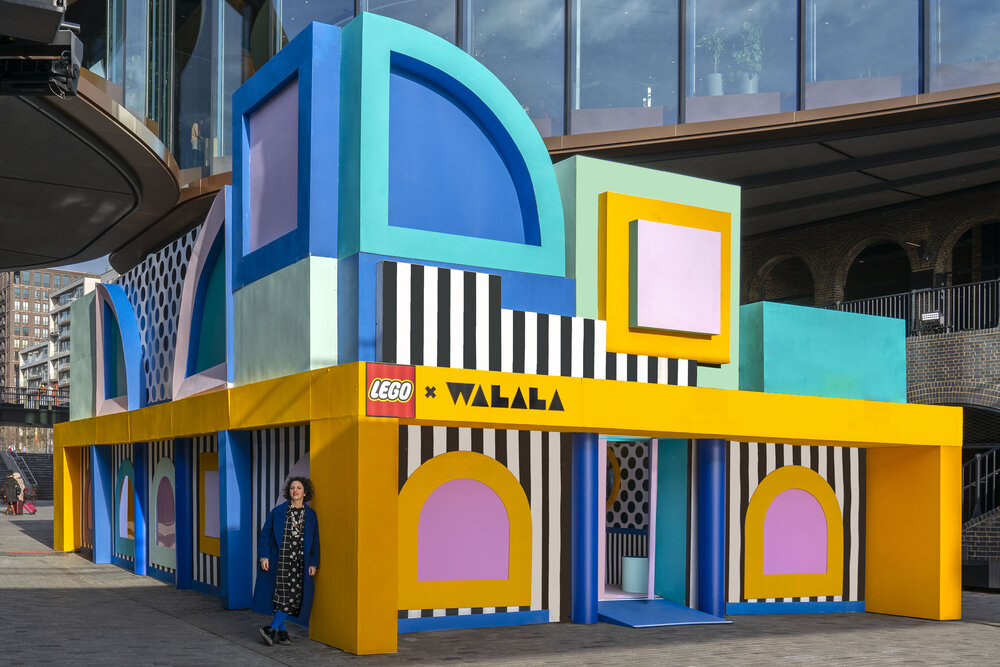
Lego Dots installation by Camille Walala
Back in 2020, Lego Group commissioned French designer Camille Walala to develop a free public art installation that would celebrate the launch of Lego Dots, the new 2D tile play concept from the Danish brand. Walala created an immersive life-sized toy house inside a two-story complex of eight containers at Coal Drops Yard in London’s Kings Cross. The fantastical structure comprises five rooms – a living room, kitchen, bedroom, bathroom and a unique Disco Room, all of which were designed to take visitors on a “journey through colour.”
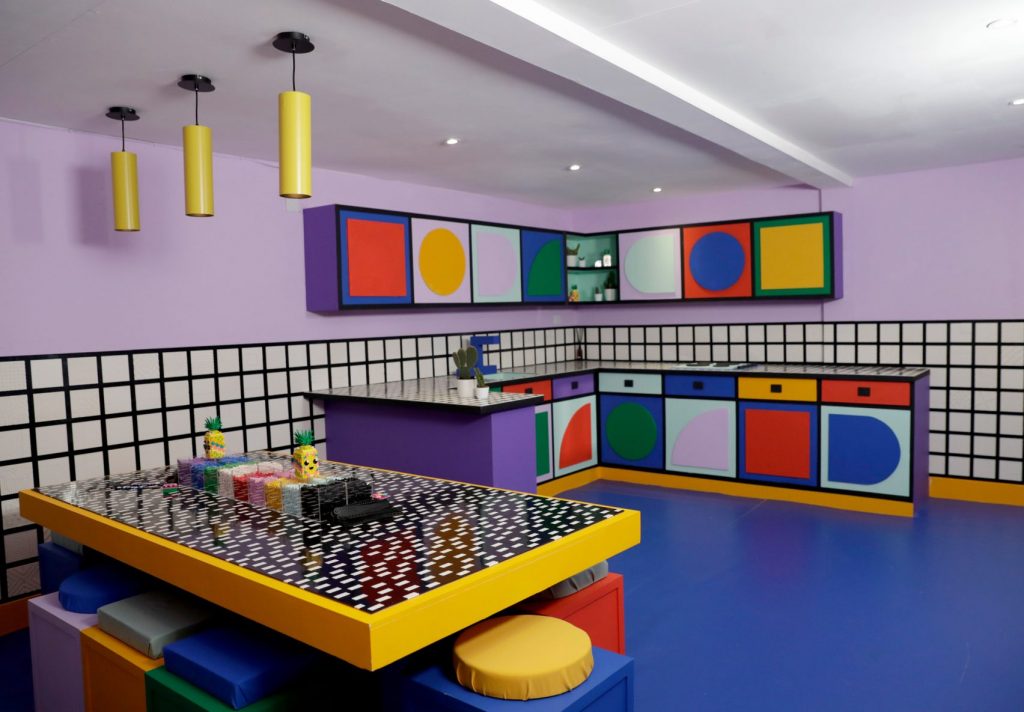
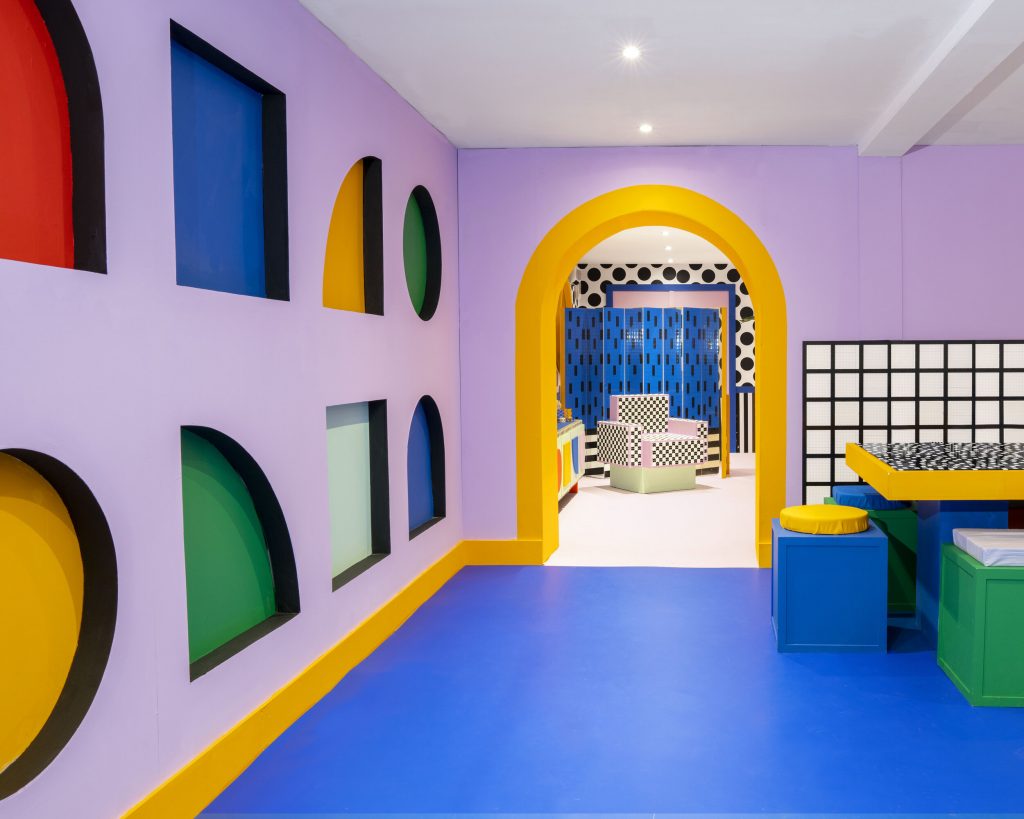
Lego Dots installation by Camille Walala
Unlike the brand’s classic bricks, this new range features flat, 2D tiles in different colours and geometric shapes, which can be combined into an array of patterns and used to adorn surfaces. That was exactly what Walala did as she used over 2,000,000 Lego Dots pieces to customize everything in the dream house, from the walls and floors to the rugs, frames and furniture in a mashup of Lego Dots and Walala’s distinctive patterns and colours. The tiles were placed individually and by hand onto large, Lego base plates, which in turn were mounted to the surface of the different plywood furniture pieces and home decor elements.
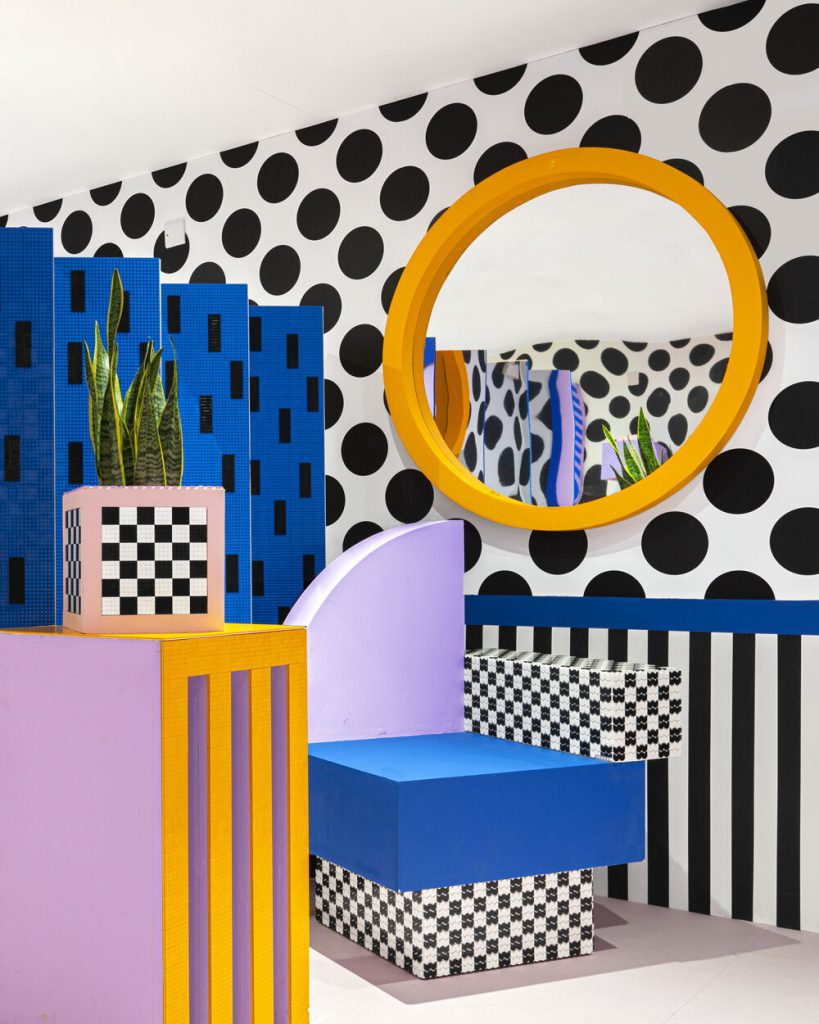
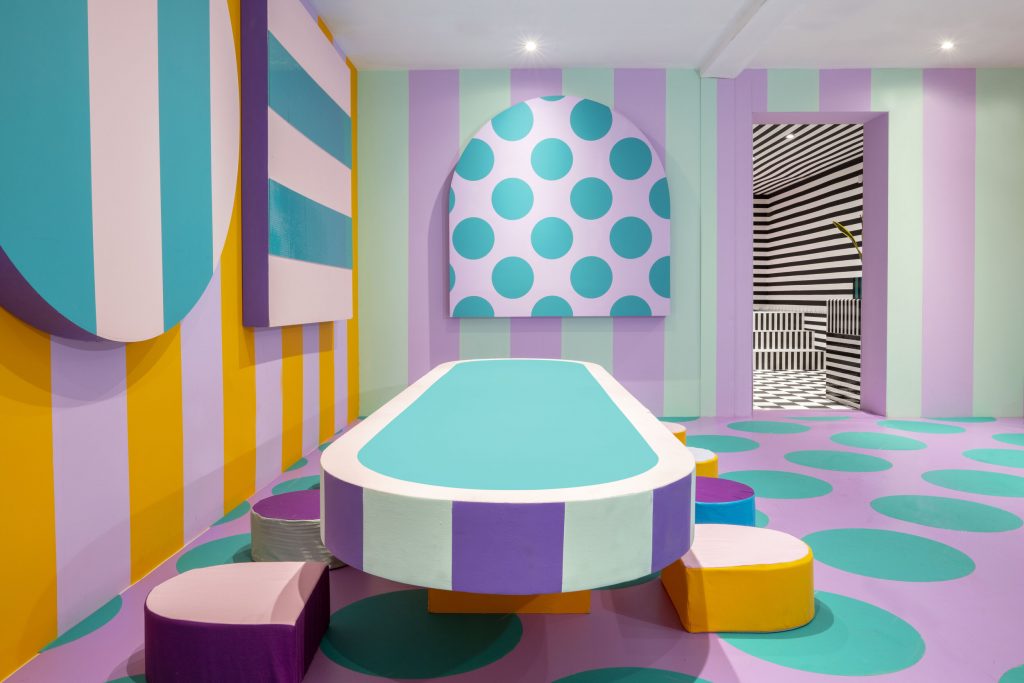
Lego Dots installation by Camille Walala
Each room in the house was given a unique palette so the spaces would have a completely different atmosphere. The bathroom is monochrome; the bedroom is a bit more Memphis, with pastels; the kitchen is quite bold and primary; and the lounge features almost the full palette of Dot colours.
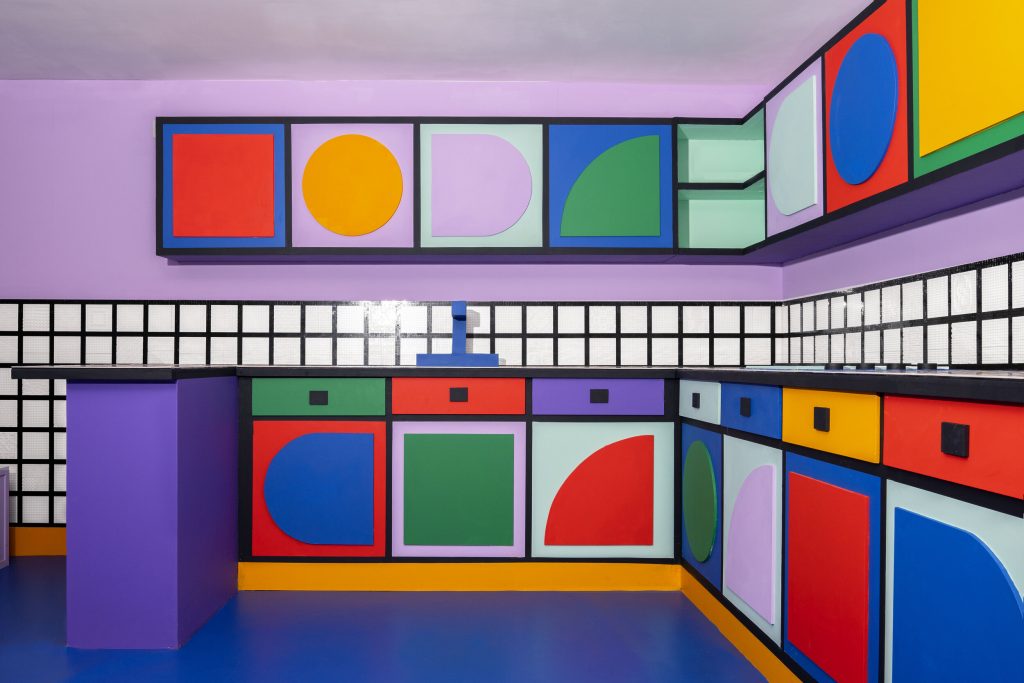
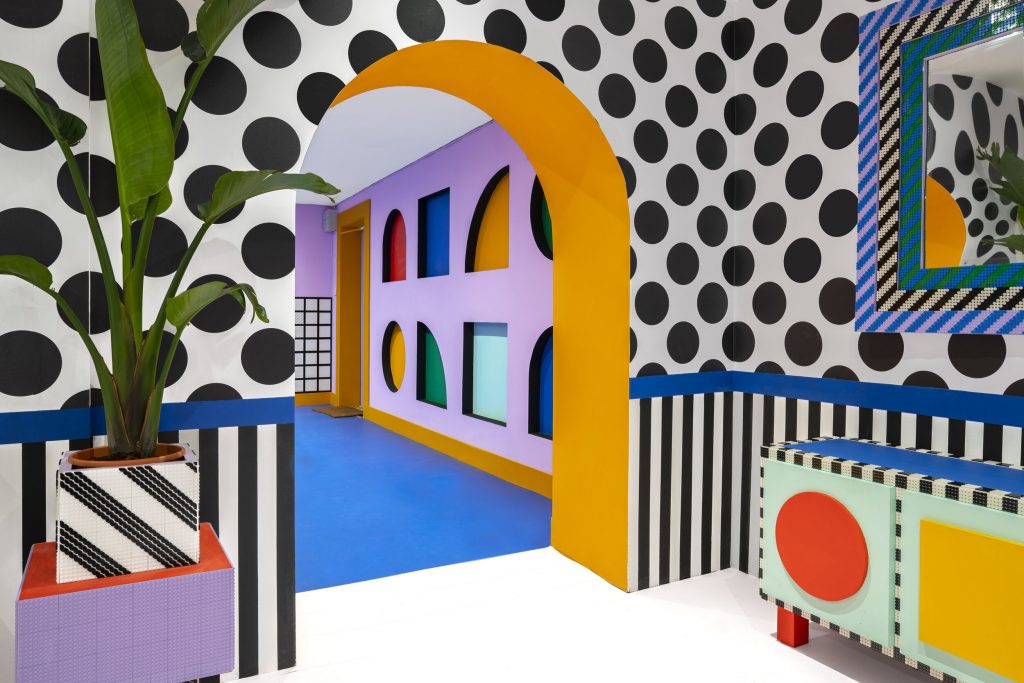
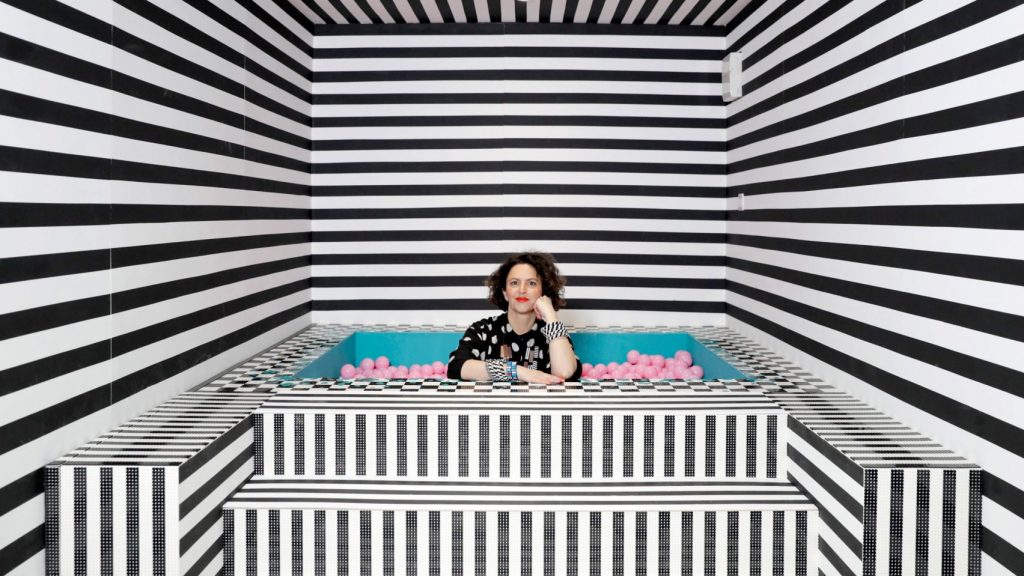
Lego Dots installation by Camille Walala
Highlights in the bathroom include an Instagram-friendly ball-pit bathtub, complete with water splashes rendered in blue Lego tiles, and an exit that takes the form of an eight-foot slide.
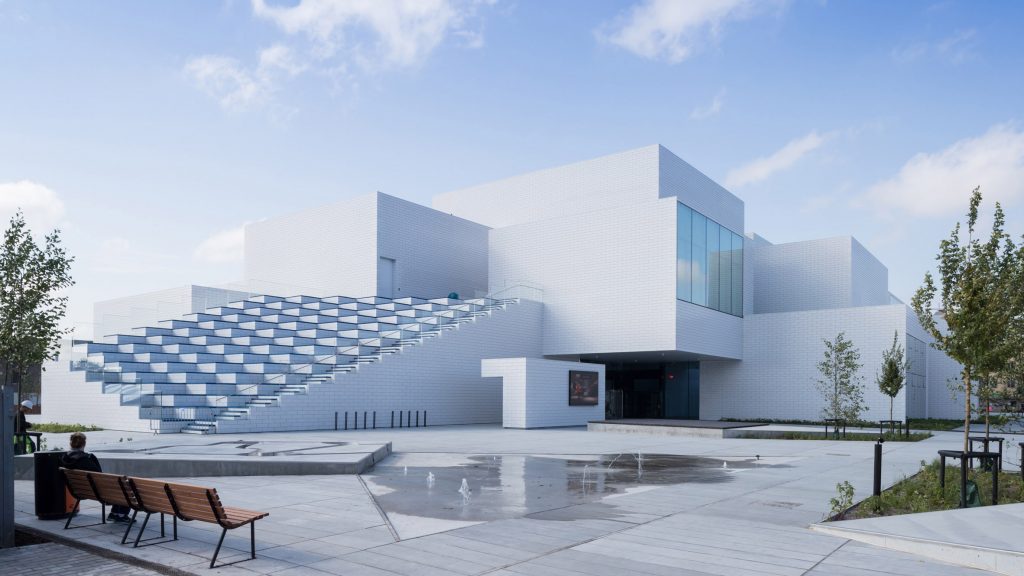
Lego House by BIG (also header image)
However, the most ambitious project for Lego is probably Lego House, a 12,000-square-metre visitor centre in the company’s hometown of Billund, Denmark, designed by Copenhagen- and New York-based firm BIG. The impressive structure comprises a stack of huge 21 blocks shaped to resemble scaled-up Lego bricks, with an array of brightly coloured patios set atop.
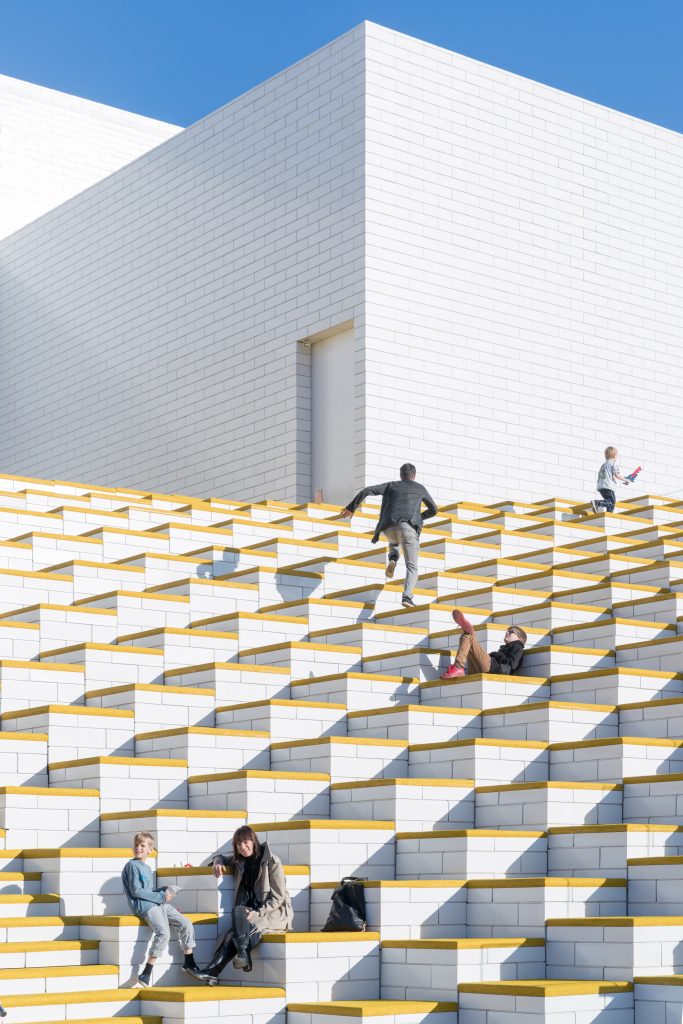
Lego House by BIG
The plaza, steps leading to the brightly coloured roof terraces and a square set into the centre of the building are open to the public, while huge Lego exhibition halls inside are for paying visitors.
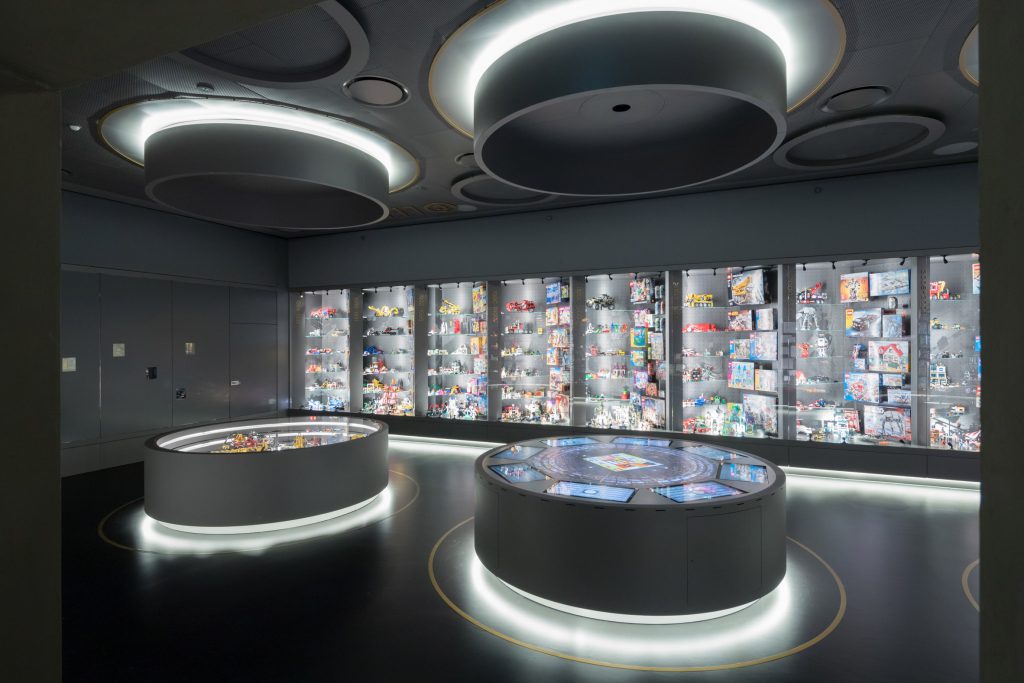
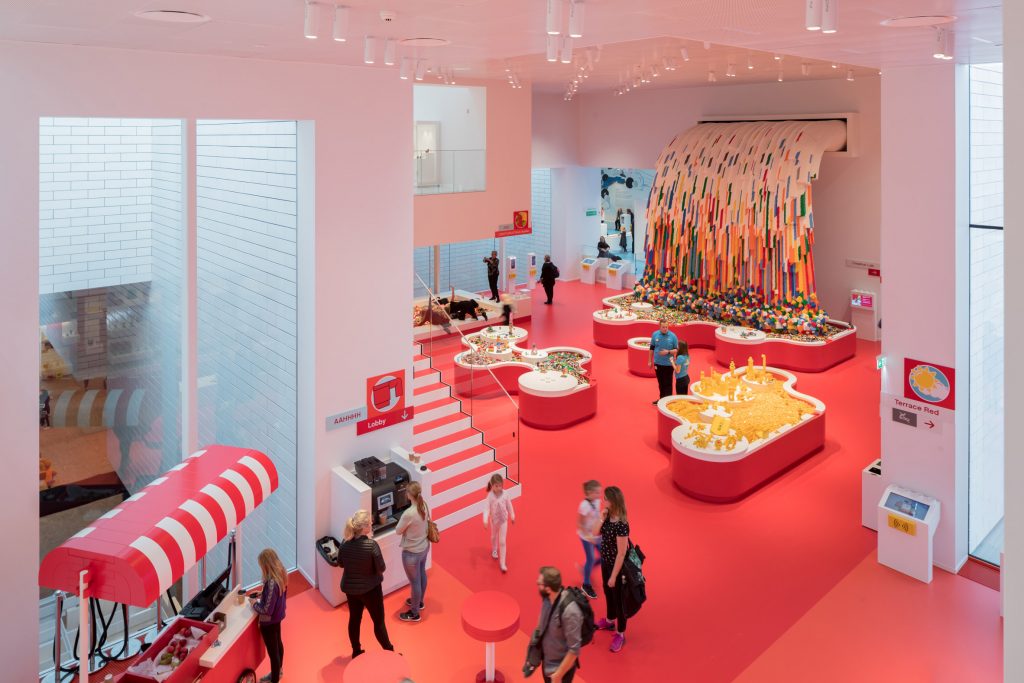
Lego House by BIG
The uppermost floor of the building accommodates the Masterpiece Gallery, which used to display structures created by Lego fans. The gallery is illuminated by eight porthole skylights that mimic the shape of the studs-connectors found on the top of each Lego block, while the roof offers visitors 360-degree views of the city.
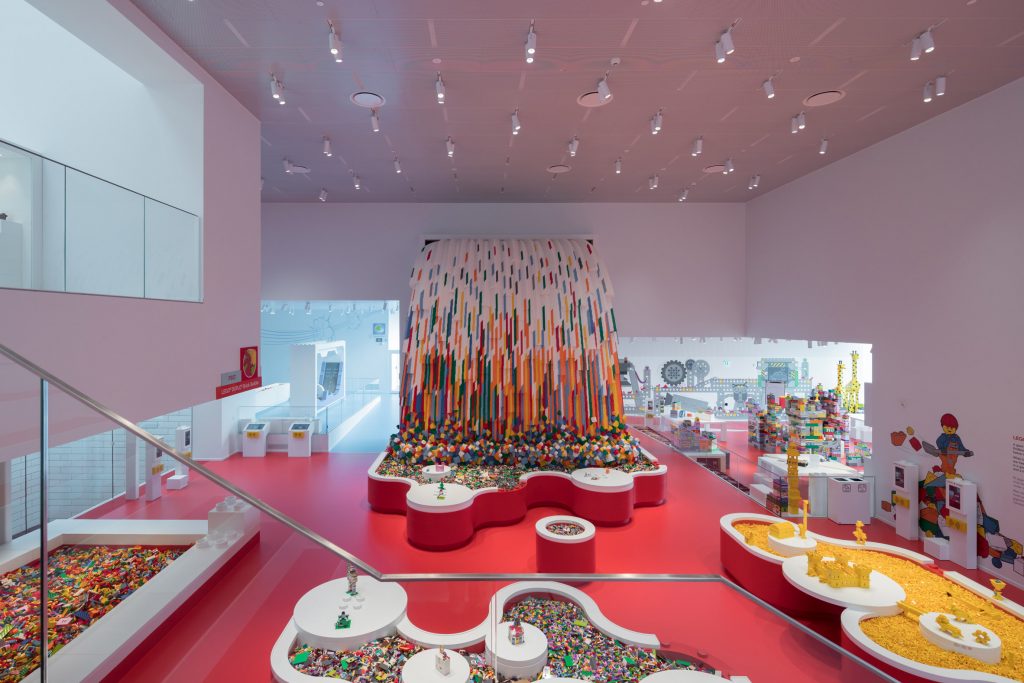
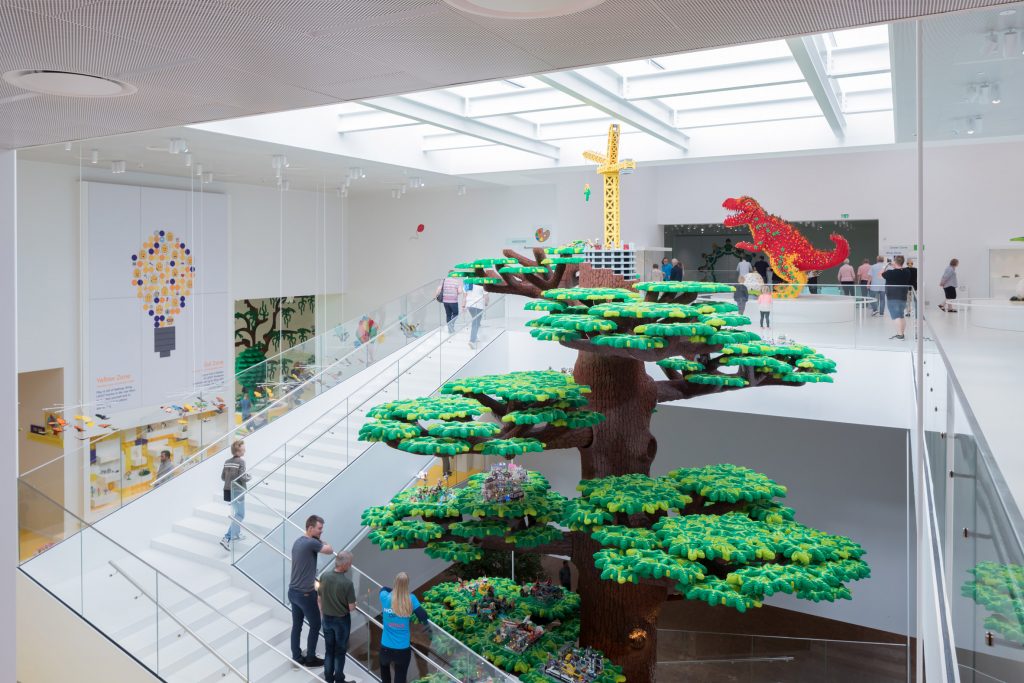
Lego House by BIG
The visitors centre also includes a cafe and restaurant – where meals are served in Lego brick-shaped boxes by robots – and conference facilities.